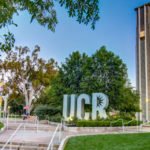2 Amazing Arizona State Honors Essay Examples
What’s Covered:
- Essay Example #1 – Piece of Art, The Sixth Sense
- Essay Example #2 – Piece of Art, Hiroshima
- Where to Get Feedback on Your ASU Honors Essay
Arizona State University Barrett Honors College provides a smaller community within the large research university with increased access to benefits like faculty mentorships and unique research and internship opportunities. In this post, we’ll go over two essays that real students submitted to Barrett Honors College, and we’ll discuss the strengths and areas of improvement. (Names and identifying information have been changed, but all other details are preserved)
Alexandra Johnson, an expert advisor on CollegeVine, provided commentary on this post. Advisors offer one-on-one guidance on everything from essays to test prep to financial aid.
Please note: Looking at examples of real essays students have submitted to colleges can be very beneficial to get inspiration for your essays. You should never copy or plagiarize from these examples when writing your own essays. Colleges can tell when an essay isn’t genuine and will not view students favorably if they plagiarized.
Essay Example #1 – Piece of Art, The Sixth Sense
Prompt: Discuss how a piece of art (painting, literature, photograph, etc.) or popular culture (song, comic book, etc.) helped you realize something new about yourself or the world. What was that realization, and how did the piece of art or pop culture bring about this change in your thinking? Do not simply describe the piece of art or pop culture; instead, focus on its effect on you. (300-500 words)
Perching up from my lounging position in the recliner, I watched intensely as Bruce Willis dreadfully observed his wife drop his wedding band, revealing that his character had been dead for the entirety of the film, unbeknownst to the audience and himself. Instinctively, I reached for my phone, as I often did after movies, to discover what had just happened on the screen before me. I was met with videos, articles, and all forms of media dissecting the film. As it explained, the director, M. Knight Shyamalan, hinted at the character’s supernatural status throughout the entire film. In fact, Bruce Willis’s character is not acknowledged by any characters in the film other than the little boy who can “see dead people”, and I never thought twice about it. To put it simply, I was fooled. In what may have been the most well-executed plot twist of all time, The Sixth Sense revealed that sometimes the simplest answers are the hardest to uncover.
Everyone has experienced it before, the “aha” moment in which they make a significant realization. For me, this instance was never more prevalent than after watching The Sixth Sense. The entire film, the director was providing me with the clues and information necessary to uncover the answer, but I, along with virtually all other viewers of the film, missed it. As I look to begin a career in business after completing my education, I find that reading between the lines and uncovering these answers is paramount. Take for example, Mark Zuckerberg starting Facebook. Mark Zuckerberg had no insider information or knowledge that was kept from the rest of the world. Everyone knew that computers and technology were the way of the future; everyone knew that kids loved their cell phones and social interaction. The difference is that Mark Zuckerberg recognized these needs and started one of the largest enterprises in the world. The concepts seem simple once they are presented, but the ability to discover them is what is important.
Information is something that is available to everyone, they just have to seek it out. With the significant research funding provided by Barrett through The Bidstrup and Barrett Research Fellowship and other programs, I know that I will have the ability to uncover this information. One specific project I would like to get involved with is the fight against the climate crisis. Just like The Sixth Sense, the writing is on the wall. The evidence is clear and the need to combat this crisis is evident. As an aspiring marketing major, I hope to utilize the information gained through my research to discover the most effective way to persuade citizens to act with environmental integrity. The unique close-knit nature of the Barrett students and faculty will aid me in my effort to achieve this goal. For me, it is not about “seeing dead people” but about seeing the answers to complex problems in business.
What the Essay Did Well
This essay does a wonderful job of answering the prompt. The writer shares a piece of popular culture, The Sixth Sense, and focuses their analysis on the part of the film relevant to their realization. They then expand on this realization before tying it to their life. This personal connection to their life and the Honors College is key to the success of this essay.
The writer starts with great imagery and instead of just talking about the film, they discuss their reaction to it. From the first sentence, the writer is a part of the story when they say, “Perching up from my lounging position in the recliner, I watch intensely…” They continue by writing about their “aha” moment and how they came to it. The end of the first paragraph leaves the reader with an idea of the essay’s message: “sometimes the simplest answers are the hardest to uncover.” Having a sentence like this at the end of your first paragraph serves both to excite the reader about the rest of the essay and ensure that the realization part of the prompt is clearly answered.
An example about Mark Zuckerberg serves as a transition from how the writer’s realization played out in a movie to why it’s relevant in everyday life. This flows well into the last paragraph where the writer talks about how they want to use Barrett Honors College’s resources to achieve their goals.
The last paragraph is strong because of how personal it is to the writer. The reader learns that the writer wants to major in marketing and conduct research about environmental issues. The essay comes full circle by relating the writer’s research goals with the movie. Doing this gives the reader closure and shows that all the information in the essay was significant.
What Could Be Improved
While writing about Mark Zuckerberg in the second paragraph does connect the film to real life, it doesn’t provide any insight about the writer. This space would be better served by elaborating on ideas in the third paragraph about what the writer wants to research, or by providing an example of a time that the writer discovered a simple answer.
The last paragraph could also benefit from even more specific details. These could include what the writer wants to research with the school funding, what professors the writers want to work with, and how the “unique close-knit nature of the Barrett students and faculty” will help the writer with their research. As a general rule, the more details you can provide when talking about why you want to go to a school, the better!
Essay Example #2 – Piece of Art, Hiroshima
Prompt: Discuss how a specific piece of art (painting, literature, photograph, etc.) or popular culture (song, comic book, etc.) helped you realize something new about yourself or the world. What was that realization, and how did the piece of art or pop culture bring about this change in your thinking? Describe the piece of art or pop culture only briefly, and focus instead on its effect on you and how it makes you a good fit for the Barrett Honors College experience. (300-500 words)
As I turned the small yellow book over and over in my hands, its thin worn pages rustling against my skin, I couldn’t help but notice the word “nonfiction” emblazoned on the cover and thought, This is going to be a boring unit.
It was sophomore year; we had just picked up Hiroshima by John Hersey. The tiny black text seemed to swim like ants across the narrow book. I opened it with apprehension that night, braced to slog through my reading homework while asking myself “how many more pages?” every other minute.
But instead, I found myself racing through Chapter 1, then 2, and even beginning 3 before I remembered the existence of my math homework. I was utterly captivated by the stories of Miss Sasaki, Reverend Tanimoto, and all the other people whose narratives were so carefully recounted. I marveled over Hersey’s ability to weave six different threads together seamlessly, to capture a portrait of overlooked suffering and illuminate it on the page.
Even after we finished our nonfiction unit and I had read the book twice, I found myself still lingering on the intersection of language and social justice, of words on paper and real-world marginalized narratives. Hersey imbued me with a new desire to do the same as him: to use language to champion change and liberty.
Inspired by Hiroshima, my creative writing took a turn as well. Where my writing had once been pure fiction, all flights of fancy and dragons through the sky, I also began using it to challenge the status quo and communicate messages. A character deals with a thousand decaying mosquito bites, a metaphor for microaggressions. Another struggles to blaze her own path in a fantasy world, representing coming-of-age in a discriminatory country. Reading such a work of creative nonfiction has lit a fire in my belly to not only strive for well-crafted writing, but to also publish meaningful stories previously shunted to the edges of society, stories that each deserve respectful amplification just as much as the next.
At the same time, this newfound passion spilled over to my debate. I’d never tried using language like this before, sharpening words to weapons and remarks to rebuttals. But gradually, as I pored over Supreme Court term limits and compulsory voting, scrutinized lethal autonomous weapons and predictive policing, my language too began to bloom. I’ve found empowerment in using words to defend and illuminate marginalized stories, taking multidisciplinary approaches to activism and methods to create positive change.
It’s been two years since I last ran my fingers over the yellowing pages of Hiroshima. But I still carry its teachings with me everywhere I go. John Hersey’s research, empathy, and advocacy for those who were systematically silenced inspires me to blaze my own trail too: to fight for social change, to stand up for the underprivileged, to apply language to the real world and speak truth to life.
What the Essay Did Well
This essay perfectly encapsulates what the prompt is trying to get at–the student effectively uses a piece of literature to illuminate how their perspective on life has changed. It is a focused, yet extremely detailed, account of how one book has made this student a more effective writer, public speaker, and activist.
Starting with the introduction, the student draws us in with imagery like “small yellow book,” and “thin worn pages rustling”. Additionally, by including their internal monologue, the student allows readers to see their original (somewhat negative) perspective on the book. Knowing their initial impression makes the reader more emotionally invested in the revelation that comes later.
Beyond setting the scene, the real strength of this essay is that the student simply does as the prompt asks and focuses primarily on the impact the book had on them. A common pitfall with this prompt is to get excited talking about your favorite piece of art, and forget that you’re supposed to be enhancing your candidacy to admissions officers. This student deftly avoids that pitfall–from the fourth paragraph onward, the essay is all about the student and how they responded to the message of the book, not the book itself.
The student also goes above and beyond in explaining just how deeply reading this book affected them. For example, a fine essay would leave the reader with this statement and move on: “Inspired by Hiroshima, my creative writing took a turn as well.”
However, this student gives us so much more, by including specific examples of how their own writing embodied messages of social justice, like the mosquito-bitten character and coming-of-age story in an oppressive nation. Additionally, when they talk about how their debating was influenced, we get details about the types of topics this student finds interesting and important, which gives us a much more concrete sense of who they are than if we were left to guess what they mean.
Finally, the elevated syntax and use of figurative language takes this essay from good to great. Phrases like “tiny black text seemed to swim like ants,” and “sharpening words to weapons and remarks to rebuttals” demonstrate this student’s gift for writing. Crucially, their use of flowery language is intentional, and works within the broader context of the essay, so it enhances their point, rather than becoming overpowering or distracting.
All in all, this essay is a strong example of how to introduce a piece of art or literature to an audience who might not be familiar with it in a way that is focused on yourself and your journey.
What Could Be Improved
The one minor improvement this student could make is to bring in Barrett Honors College at the end. By explaining how they’ll continue their activism at ASU, they’d show the admissions committee exactly how they’d fit into ASU’s campus community.
Remember, colleges want students who aren’t just accomplished in high school, but also ready to make the most of their four years in college. Even if the prompt doesn’t directly ask you to connect your past experience to your future at that school, it’s always smart to allude to how you will take the lessons you’ve learned in high school to make a difference in college.
While space is always a factor with college essays, it wouldn’t take more than one or two sentences for this student to explain how they will continue their social justice-inspired creative writing by contributing a column to the school paper, or how they want to host roundtable discussions on current events with other Honors College students in their dorm at ASU.
Notice that these hypothetical examples are specific. It’s important to go beyond just saying something name-droppy like “Barrett is the perfect place for me to continue my activism work,” and instead be precise about the ways you’d contribute to the ASU community.
Where to Get Feedback on Your ASU Honors Essay
Do you want free, nearly-instantaneous feedback on your ASU essays? After rereading your essays countless times, it can be difficult to evaluate your writing objectively. So meet Sage, our AI tutor and advisor, who will rate your essay, give you suggestions for improvement, and summarize what admissions officers would take away from your writing. Sage can improve your chances of acceptance to your dream school by helping you show what you have to offer beyond the numbers!


